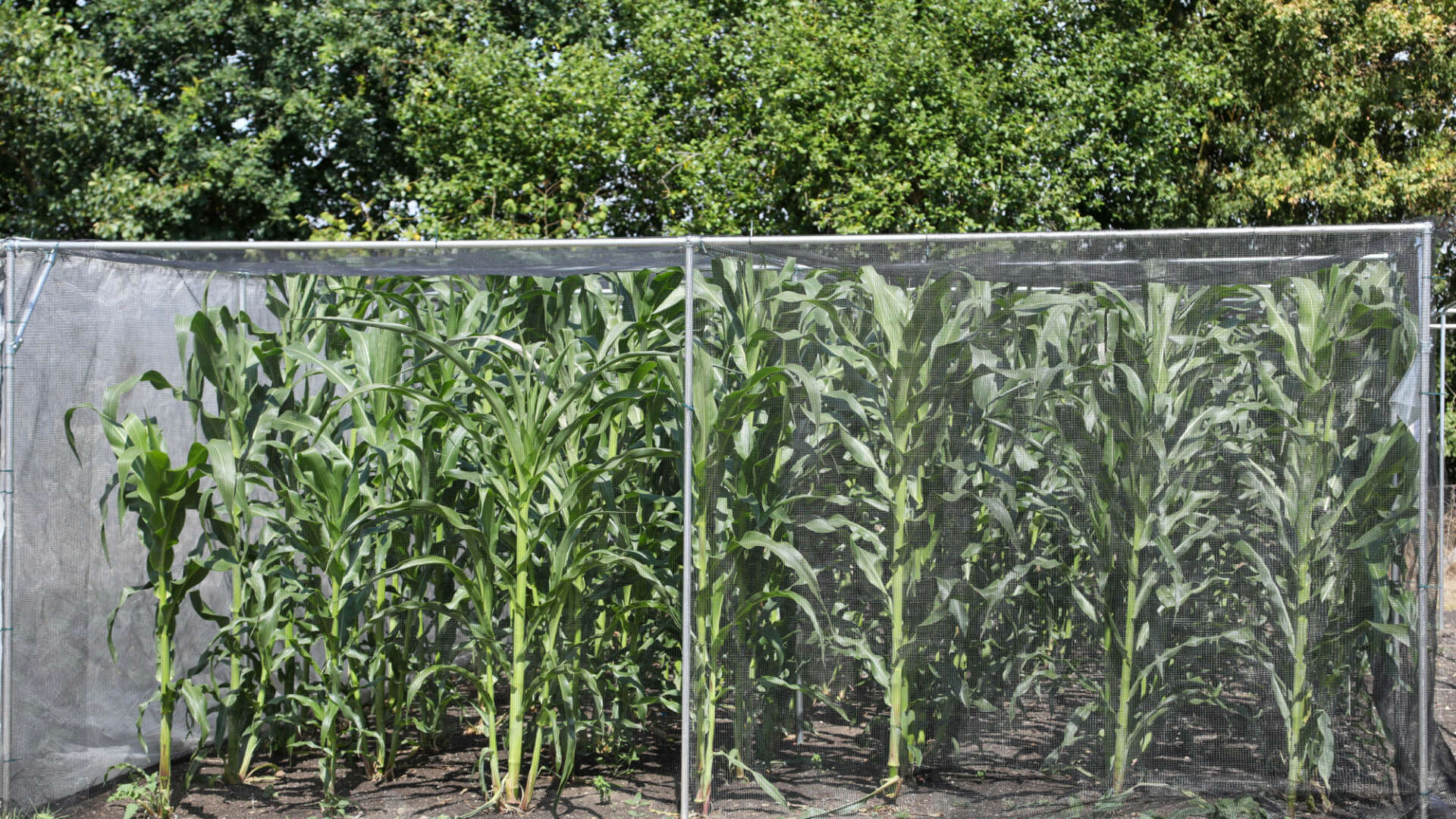Pests and diseases
Making barriers

Friendly ways to protect your crops
We don’t like to use the word ‘pests’ at Garden Organic, as it’s important to live and love nature when you’re gardening organically.
But we understand that sometimes, no matter how hard you try - and often thanks to climatic factors - your finely tuned ecosystem gets out of balance. Here’s some barriers we like to use:
Fine mesh
This helps protect from flying insects such as cabbage whites and flea beetle, but also deters mice. Lay over sturdy plants and they will continue to push up and grow or drape over flowerpots on top of canes to produce a tunnel or cage. High strength, UV stabilised mesh is best, as this will not degrade and can be recycled year-in-year out, but you could also recycle net curtains. It's also possible to get biodegradable mesh that reduces your plastic use.
Netting
Less fine than mesh but still producing a barrier for larger animals, this is a good deterrent for pigeons. You can buy plastic-free and biodegradable natural jute mesh. Ensure net tunnels are closed at both ends so there is no entrance for pigeons to squeeze in - or the possibility of birds getting trapped. But remember you'll also be keeping our pollinating insects so choose carefully.
Fleece
Particularly useful for carrot fly. A vertical barrier of fleece, around 70cm to 1m high, has been shown to stop the flies, as they are not strong fliers. Fleece can also be used in place of netting and mesh for tunnel cloches. As fleece is a single-use plastic, made from polypropylene fibres, use this sparingly or try to find a more eco-friendly material.
Glass cloches
Cold frames and cloches can be made from recycled windowpanes or refrigerator glass and balanced on bricks. Or you can make individual ‘mini greenhouses’ from cut off drinks’ bottles. They offer frost, wind and insect protection but should be taken off as conditions warm to avoid scorching plants. They also need to be kept well ventilated. You can lift one edge with a stone or pebble or open the screw cap on a bottle so condensation doesn’t build up, which can lead to damping-off.
Collars
These are handy around cabbages to reduce cabbage root maggot. They can be made easily out of a square or circle of cardboard. Cut a slit to fit the disc around the stem of the plant at soil level.
Slug barriers
A slug assault course of copper piping, tape, eggshells, straw, grit, or sheep’s wool can discourage slugs from munching through young seedlings and new leaves. Simply scatter in a circle around the base of vulnerable plants, or in pots, an inch or two from the stem. This forms a sharp-edged fence around the plant, which slugs do not like to cross.
Barrier glue
This is particularly useful for managing vine weevil. Put a strip of wide PVC tape, such as brown plastic parcel tape, around individual pots and tubs, and smear this liberally with insect barrier glue that the weevils cannot cross.